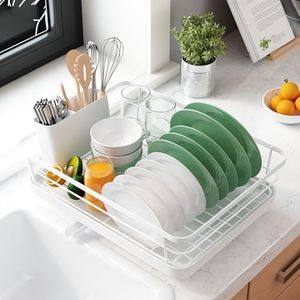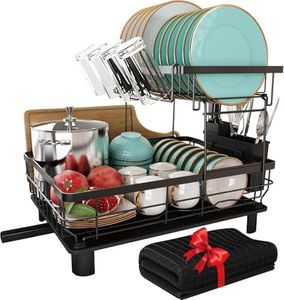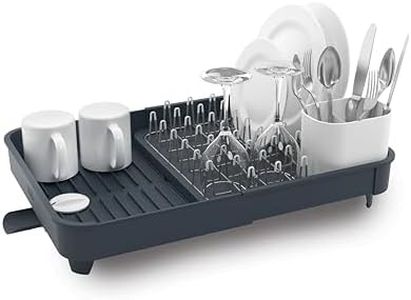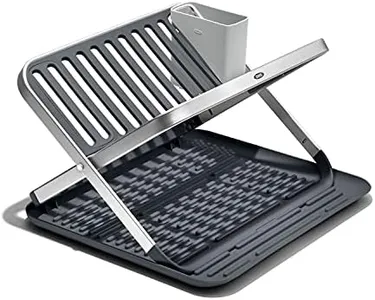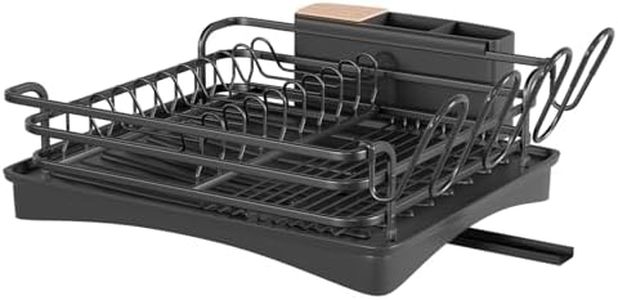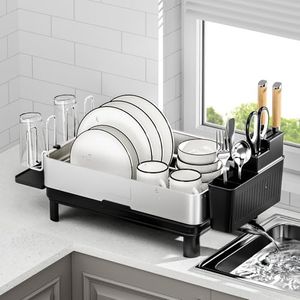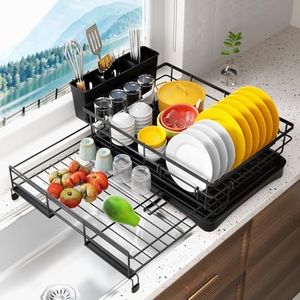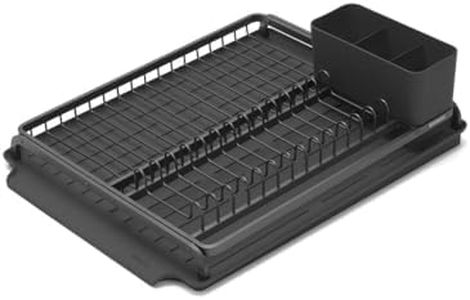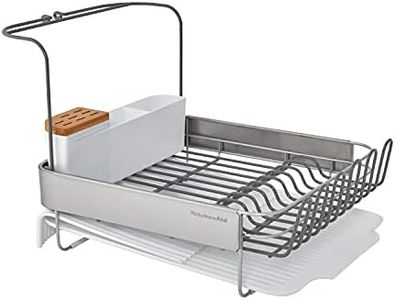We Use CookiesWe use cookies to enhance the security, performance,
functionality and for analytical and promotional activities. By continuing to browse this site you
are agreeing to our privacy policy
10 Best Dish Drying Racks
From leading brands and best sellers available on the web.Buying Guide for the Best Dish Drying Racks
Choosing the right dish-drying rack can make your kitchen tidier and your cleanup routine much smoother. Since dish-drying racks come in various sizes, materials, and styles, it's important to consider your kitchen space, the number of dishes you usually have, and your cleaning habits. Think about where you want to keep the rack (countertop, over the sink, or inside a cabinet) and how much capacity you truly need to avoid clutter. The right rack fits naturally into your kitchen routine and makes dish drying easy and mess-free.Size and CapacitySize refers to both the physical dimensions of the rack and how many dishes it can hold. This is important because a rack that's too large will take up valuable countertop space, while one that's too small won't handle your dish load. Racks range from compact models for one or two people to large multi-tier racks for households that wash many dishes at once. If you have a small kitchen or live alone, a compact rack or over-the-sink model may be best. For families or avid cooks, go for a larger, multi-level rack that gives you room for plates, bowls, and cookware.
MaterialDish-drying racks are commonly made from plastic, stainless steel, or coated metal. The material affects durability, appearance, and maintenance. Stainless steel racks are strong, rust-resistant, and look modern, but may cost more. Plastic racks are lightweight, budget-friendly, and come in various colors, but may stain or crack over time. Some racks have a rust-resistant or anti-slip coating, which improves longevity and stability. Choose a material that fits your cleaning habits and kitchen aesthetics—if you want something sturdy and long-lasting, go for stainless steel; if you want something easy to move and clean, plastic might be ideal.
Drainage SystemThe drainage system is how the rack channels water away from your dishes and onto the sink or into a drain tray. It prevents water from pooling, which can cause mold or messes. Some racks have sloped trays directing water back to the sink, while others might be flat and require manual emptying. If your rack will sit by the sink, look for a model with a good drainage spout or sloped base. If it will be on a separate part of the counter, consider how easy it is to empty any water that collects.
Design and LayoutThis refers to how the rack is organized—how many slots for plates, holders for cups, and sections for utensils. A well-designed rack uses space efficiently and keeps dishes upright for quicker drying. Some designs include detachable cutlery holders or special areas for glassware and pots. If you use a lot of large pans or bakeware, look for wider slots or open spaces. If you have many small items, a rack with multiple compartments or layers can help.
Ease of CleaningA dish-drying rack must be cleaned often to stay hygienic. Models with fewer nooks and crannies or removable parts make this easier. Features like detachable trays, dishwasher-safe components, or smooth surfaces help with regular maintenance. Consider how much time and effort you want to spend cleaning the rack; if you prefer low-maintenance solutions, look for simple, open designs or racks labeled as easy to clean.
Storage OptionsIf you don't want to leave your drying rack out all the time, some racks fold flat or collapse for easy storage, while others are fixed and stay on the counter. Foldable or collapsible racks are ideal for smaller kitchens or if you like a clear counter when the rack isn't in use. Think about your available storage space and whether you'll be leaving the rack out permanently or putting it away frequently.
